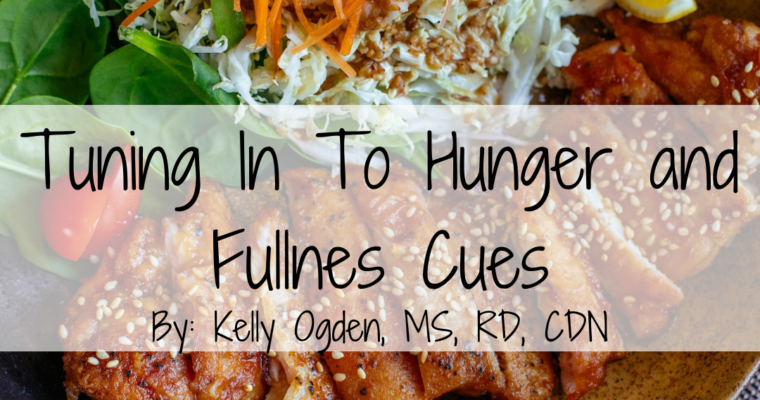One of the things I see many of my clients struggle with is being mindful at mealtimes. Practicing mindfulness will help you to derive more enjoyment from the eating experience and keep you focused to ensure you are getting exactly what your body needs, no more no less. Read on, friends.
Distract less, enjoy more
So often we eat on the run or distracted in front of our TVs, cell phones, and other electronics and miss out on the opportunity to fully be present at mealtimes. If you are shoveling food in your mouth while watching the latest Buzzfeed video there is no way you’re going to notice the subtle sweetness of the carrots in your salad or the texture of the inside of a tomato. To avoid distracted eating you need to turn off electronics, end phone calls, put books down, and avoid dashboard dining. I just take the fun out of everything, don’t I?
Savor the flavor
Except I don’t because when you aren’t distracted you get to savor the flavor. When is the last time you slowed down enough to savor the taste of a fresh tomato or inhaled over a plate of herb roasted vegetables? Mealtimes should be a full sensory experience incorporating the obvious senses of taste and smell (which together give us flavor) but also by noticing the texture of foods, hearing the crunch of fresh vegetables, and seeing the rainbow of colors real foods contribute. Make sure to chew each bite thoroughly to get the full experience. When you utilize all senses during meal times you will find yourself enjoying meals more and craving real, whole foods rather than processed junk that requires chemical manipulations to hijack your taste buds just for a little attention. #gimmegimmemore
Sit at a table
Each time you sit down to a table you are helping to establish the pattern that being at a table undistracted is what you should be doing at meal times. Sitting down at the table, preferably with the company of family or friends, provides key connecting experiences that make life worthwhile and helps to minimize distractions. Children and adolescents that have family meals are more likely to have a better diet quality which extends into young adulthood (1), less likely to be overweight (2), use cigarettes, alcohol, and marijuana, have a higher grade point average, less depressive symptoms and suicidal ideation, and better self esteem (3). Even for adults, eating on the go is associated with higher intakes of soft drinks and fast food and lower intakes of health promoting foods like fruits and vegetables (4). When you don’t have to worry about balancing your plate in your lap or while you drive you have more time and senses to devote to the food itself.
Put your fork down between bites
This one could be a game changer for you and it’s a super simple technique to implement while eating. Most of the time we’re eating so fast we have the next bite on the fork ready to go before we’re even done chewing the first one. By putting your fork down in between bites and not picking it up until you’re finished chewing you are slowing the meal down and giving your stomach the time it needs to tell your brain your are no longer hungry. This will also allow you to do more of the next mindful activity.
Engage in conversation
Not to get all philosophical but the beauty of life is our ability to connect with others and, in my opinion, the best way to connect with others is talking over a delicious real food meal. Loneliness and isolation are emotionally unpleasant and can be detrimental to health by interfering with normal sleep patterns, increasing cortisol levels, altering gene expression, increasing depression, elevating blood pressure, and lowering your overall sense of well-being (5). Social isolation is also associated with poor physical and mental health outcomes later in life (6). Connecting in real life allows you to form deeper relationships than anything you could do over social media. What you think and have to say is valuable, so open your mouth and share your ideas with others. The more time you spend doing this, the more connected you will feel to your loved ones. In addition to social connection, you can’t talk and chew at the same time so by opening your mouth to tell your family and friends about your day you are again slowing down the process of eating and allowing your gut and brain to communicate. Eating isn’t a race so take your time.
Drink a glass of water with meals
Drinking also requires putting your fork down so this is yet another trick to slow yourself down during meals. The added water will also add volume to the contents of your stomach enacting the stretch receptors and signaling to your brain that you’re filling up. Plus, you need water and most people don’t drink enough.
Use smaller plates
Most of the time when I ask someone when they stop eating their answer is when their plate is empty, not when they are no longer hungry. By utilizing a smaller plate you can check in with your stomach at the end of a meal and ask, am I really still hungry? If the answer is yes and you are utilizing the principles in this post then by all means, have more, but more chances than not you will find yourself filling up after that small plate. I can sense the athletes out there saying “come on, Pearl” but give it a shot. Worst case scenario you just fill up your plate again.
Stop when you are not hungry, not when you are full
There is a significant difference in energy intake from the time you are no longer hungry to the time that you are full. Utilizing the above tips will help you to identify this time but checking in with yourself throughout the meal, perhaps when you stop to take a sip of water, will help you to ensure you are getting the right amount of energy for your hunger at that time.




